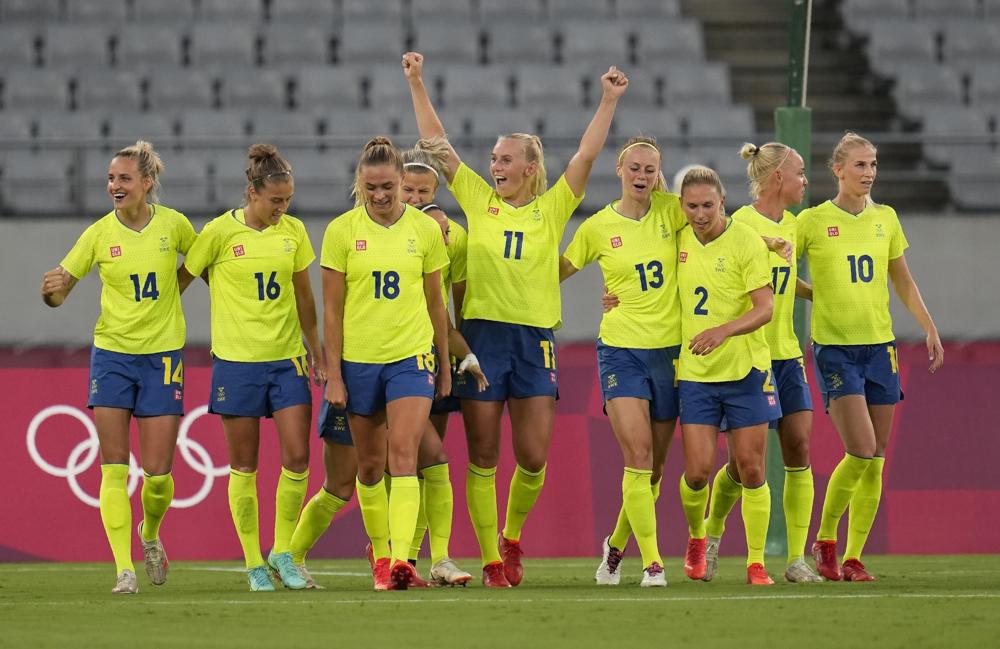
Any sporting event is, at its heart, a show. It has the actors on center stage, performing for the rest of us. It has the spectators, sitting in their seats watching raptly. And — in modern times, at least — it has the “home” audience, which in the past half century of growing video viewership has far outpaced the numbers of those actually in attendance.
At their halfway point, the Tokyo Olympics are still grappling with the fact that in that equation, the middle group — those spectators on the scene who cheer, gin up enthusiasm and add texture to the proceedings — couldn’t come. And in the COVID era, a key question presents itself: If an Olympics falls in the forest and nobody there hears it, did it really make a sound?
The Japan organizing committee’s president, Seiko Hashimoto, thinks it will. She said a couple weeks ago that she wasn’t worried that a locked-down, crowdless Olympics — what she calls the “`Tokyo model” — would fundamentally change the experience. “The essence of the Games,” Hashimoto said, “will remain the same.”
They won’t, of course. They already aren’t. And in fairness, how could they, when part of that very essence — the roar of a real, live crowd — has been excised out of (you know the phrase by now) an abundance of caution?
During the 18 months of the coronavirus pandemic, the relationship between the watched and the watchers in audience-based public events has shifted tectonically. Productions that normally happen in front of crowds — crowds that, it’s worth noting, both watch performances and sometimes become an integral part of them — have changed in various ways. But when it comes to fan interaction, sports, arguably, have been affected the most of all.
Last summer, once big league baseball resumed without fans in the seats, the sport deployed recorded, piped-in crowd noise for the benefit of both athletes and fans watching at home. Most ballparks even created cardboard figures (customizable for a price, of course) to mimic spectator action, a novel if laughable pivot.
There is a very real purpose to crowds, beyond how they impact athletes and performers who are actually there. Research has shown that at-home audiences watching competition — and other forms of entertainment — react to the feeling that they have proxies who are really in the arena. That, in effect, if we can’t be there, we know there are people like us who are.
There’s the pathos factor, too. The prevailing American Olympic TV narratives — emotion-saturated backstories about individuals, backed by loved ones, working hard and triumphing — are typically intertwined with crowd shots that include those very supporters watching the achievements happen.
There are mitigating factors to Tokyo’s empty seats during these Games. Social media fills in the gaps to some extent; instead of watching a community of watchers, we can now form our own.
But it’s not quite the same, is it? There’s a reason that young boys playing driveway basketball stop after a shot and shout, “He shoots, he scores!” before cupping their hands to their mouth to approximate a crowd’s roar. There’s nothing like it.
And when TV cameras pan various Olympic venues and find emptiness, or even seats painted in seemingly random drab colors to look as if there are people in them, it’s clear that something — that certain something that only a crowd can provide — is glaringly absent.
In the era of screens and of vicarious watching and global live broadcasts, three simple words, “I was there,” still hold power — even if you’re one of the ones who aren’t.
__
Courtesy of The Associated Press




One comment
Andrew Finn
August 1, 2021 at 9:50 pm
Olympics ?? Olympics ?? Oh yeah, didn’t people used to watch that ??
Comments are closed.